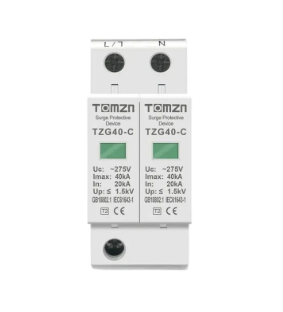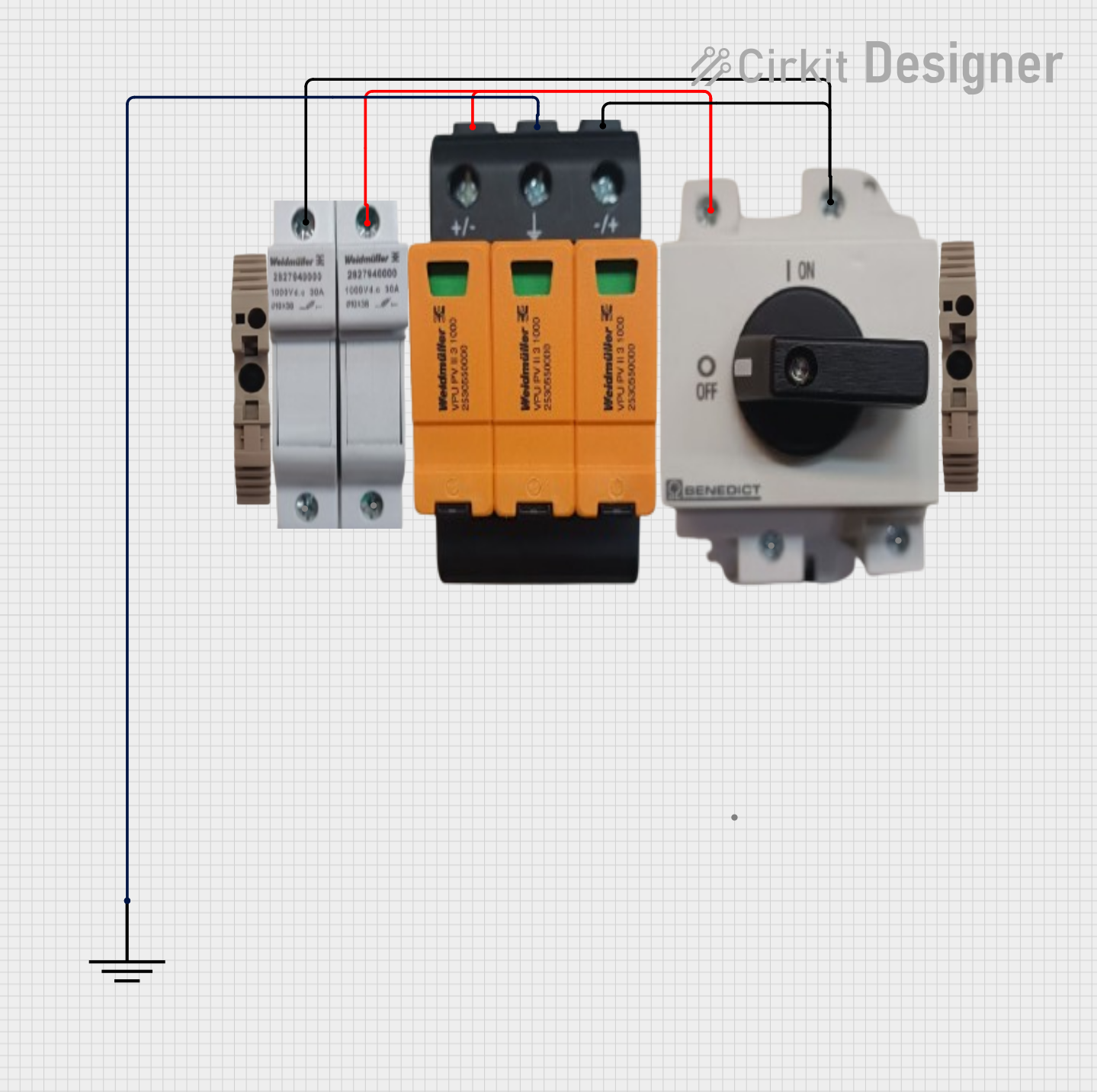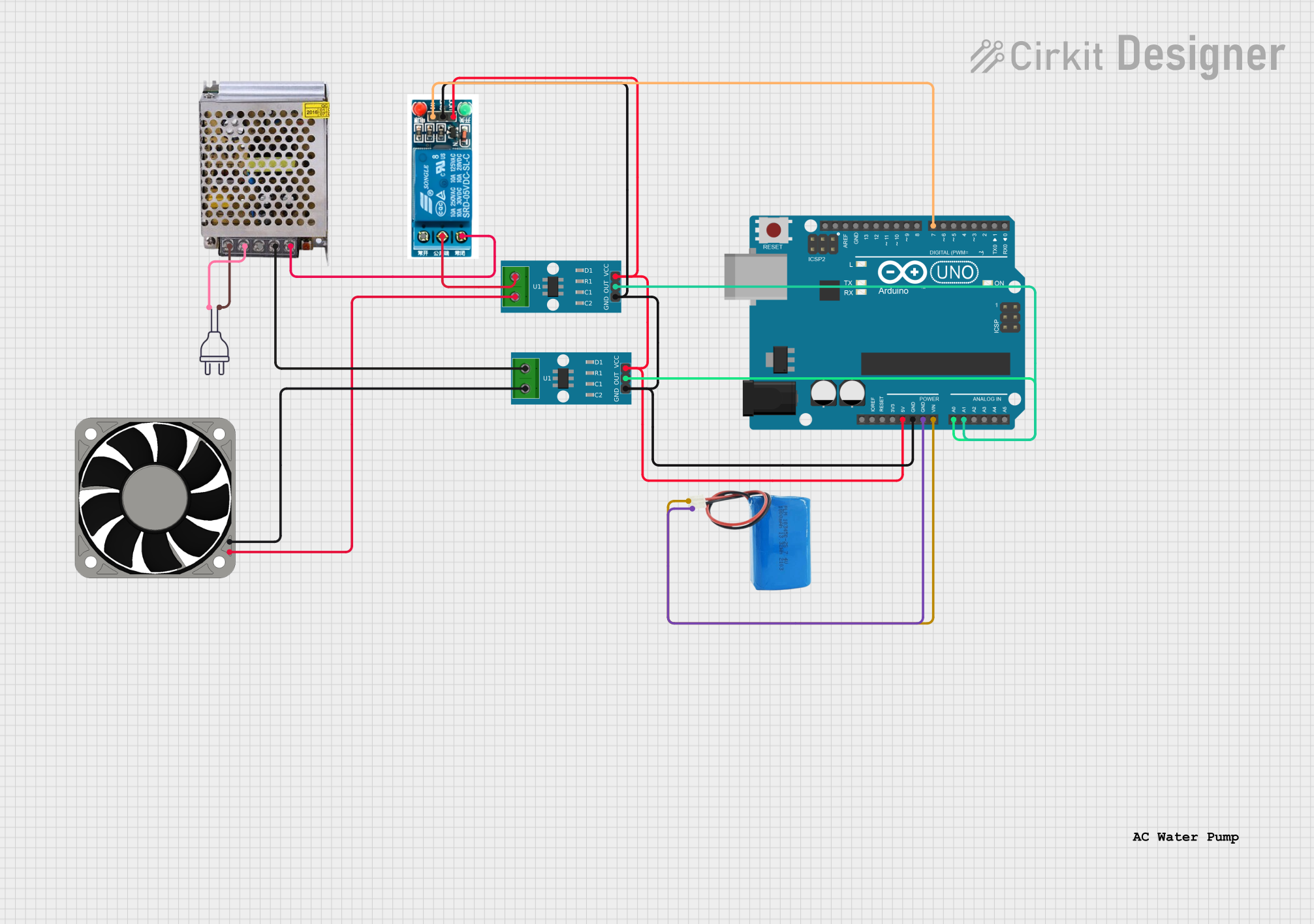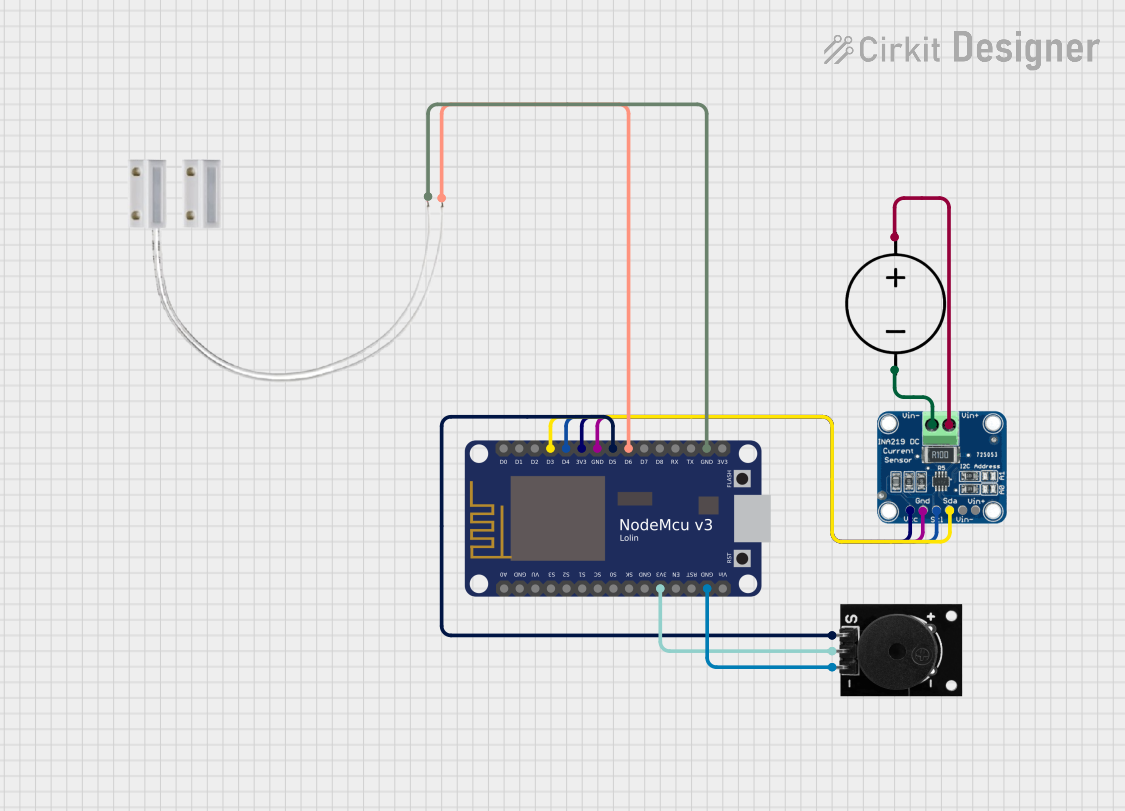
How to Use surge arrester tomzn: Examples, Pinouts, and Specs

 Design with surge arrester tomzn in Cirkit Designer
Design with surge arrester tomzn in Cirkit DesignerIntroduction
A surge arrester TOMZN is a protective device designed to limit voltage spikes and transients in electrical systems. It safeguards sensitive equipment from damage caused by lightning strikes, switching surges, or other transient overvoltage events. By diverting excess voltage to the ground, the surge arrester ensures the longevity and reliability of electrical and electronic systems.
Explore Projects Built with surge arrester tomzn

 Open Project in Cirkit Designer
Open Project in Cirkit Designer
 Open Project in Cirkit Designer
Open Project in Cirkit Designer
 Open Project in Cirkit Designer
Open Project in Cirkit Designer
 Open Project in Cirkit Designer
Open Project in Cirkit DesignerExplore Projects Built with surge arrester tomzn

 Open Project in Cirkit Designer
Open Project in Cirkit Designer
 Open Project in Cirkit Designer
Open Project in Cirkit Designer
 Open Project in Cirkit Designer
Open Project in Cirkit Designer
 Open Project in Cirkit Designer
Open Project in Cirkit DesignerCommon Applications and Use Cases
- Protection of residential, commercial, and industrial electrical systems.
- Safeguarding sensitive electronic devices such as computers, servers, and communication equipment.
- Use in power distribution systems to prevent damage from lightning-induced surges.
- Protection of renewable energy systems, such as solar inverters and wind turbines.
Technical Specifications
Key Technical Details
| Parameter | Value |
|---|---|
| Rated Voltage (Un) | 230V AC / 400V AC |
| Maximum Continuous Voltage (Uc) | 275V AC / 385V AC |
| Nominal Discharge Current (In) | 20 kA |
| Maximum Discharge Current (Imax) | 40 kA |
| Voltage Protection Level (Up) | ≤ 1.5 kV |
| Response Time | < 25 ns |
| Operating Temperature Range | -40°C to +80°C |
| Housing Material | Flame-retardant thermoplastic |
| Mounting Type | DIN Rail (35 mm) |
| Standards Compliance | IEC 61643-11, EN 61643-11 |
Pin Configuration and Descriptions
The surge arrester TOMZN typically has the following terminal connections:
| Terminal Label | Description |
|---|---|
| L | Line (Live) connection for incoming voltage |
| N | Neutral connection for incoming voltage |
| PE | Protective Earth (Ground) connection |
Usage Instructions
How to Use the Component in a Circuit
- Installation Location: Install the surge arrester as close as possible to the equipment or distribution board you want to protect.
- Wiring:
- Connect the L (Line) terminal to the live wire of the incoming power supply.
- Connect the N (Neutral) terminal to the neutral wire of the incoming power supply.
- Connect the PE (Protective Earth) terminal to the ground wire.
- Mounting: Secure the surge arrester on a standard 35 mm DIN rail in the distribution box.
- Testing: After installation, verify the connections and ensure the device is functioning correctly by checking the status indicator (if available).
Important Considerations and Best Practices
- Ensure the surge arrester's rated voltage matches the system voltage.
- Always connect the PE (Ground) terminal to a proper grounding system for effective surge protection.
- Regularly inspect the surge arrester for signs of wear or damage, especially after a lightning storm.
- Replace the surge arrester if the status indicator shows a fault or if it has reached the end of its service life.
- Avoid using the surge arrester in systems with voltages exceeding its maximum continuous voltage rating (Uc).
Arduino UNO Integration
While surge arresters are not directly interfaced with microcontrollers like the Arduino UNO, they can be used to protect the power supply feeding the Arduino. For example, you can install a surge arrester on the AC mains line powering the Arduino's adapter to prevent voltage spikes from damaging the board.
Troubleshooting and FAQs
Common Issues and Solutions
| Issue | Possible Cause | Solution |
|---|---|---|
| Surge arrester not functioning | Incorrect wiring or loose connections | Verify all connections and tighten them. |
| Frequent tripping or failure | Overvoltage beyond arrester's capacity | Check system voltage and replace with a higher-rated arrester if needed. |
| Status indicator shows a fault | Surge arrester has reached end of life | Replace the surge arrester immediately. |
| Equipment still damaged by surges | Improper grounding or installation | Ensure proper grounding and correct installation. |
FAQs
How do I know if the surge arrester is working?
Most surge arresters have a status indicator (e.g., a window or LED) that shows whether the device is operational. If the indicator shows a fault, the arrester needs replacement.Can I use a surge arrester for DC systems?
No, the TOMZN surge arrester is designed for AC systems. For DC systems, use a surge arrester specifically rated for DC voltage.How often should I replace the surge arrester?
Surge arresters should be replaced after a significant surge event or if the status indicator shows a fault. Regular inspections are recommended to ensure proper functionality.What happens if the surge arrester fails?
If the surge arrester fails, it may no longer protect your equipment from voltage spikes. Replace it immediately to maintain protection.